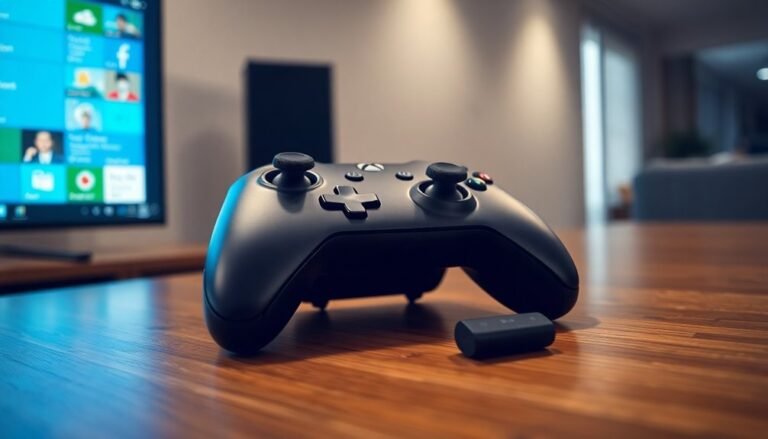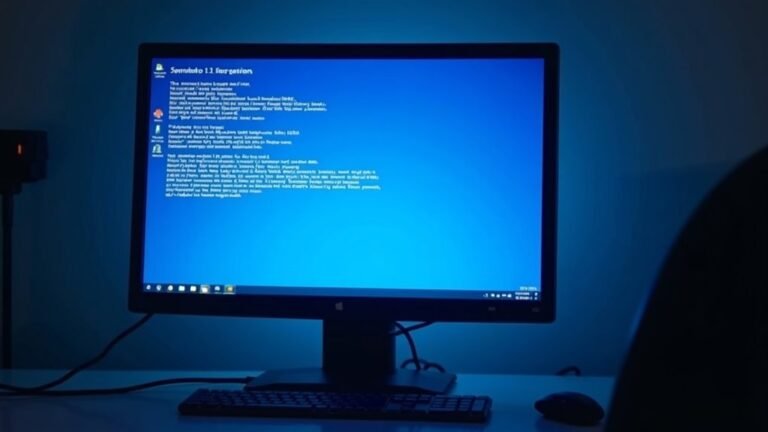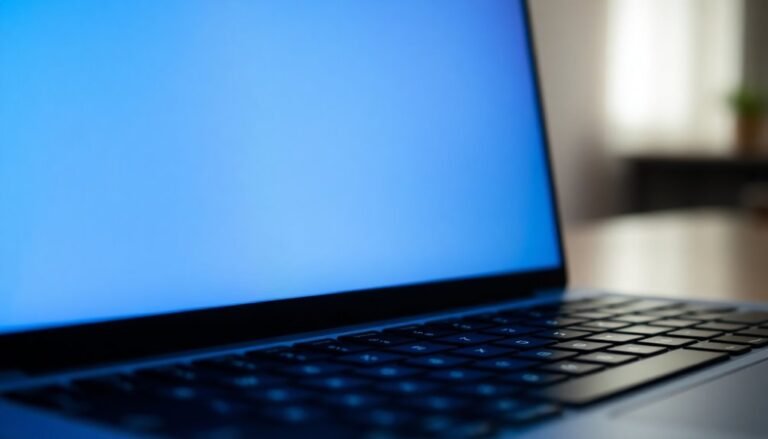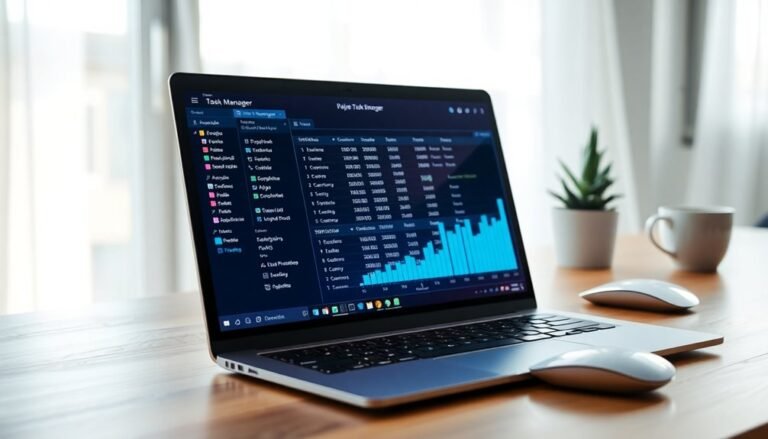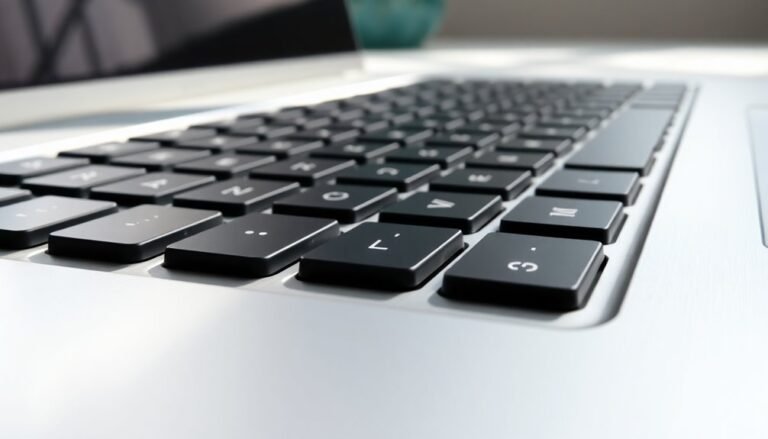PC Memory Usage High: Fix High RAM Consumption
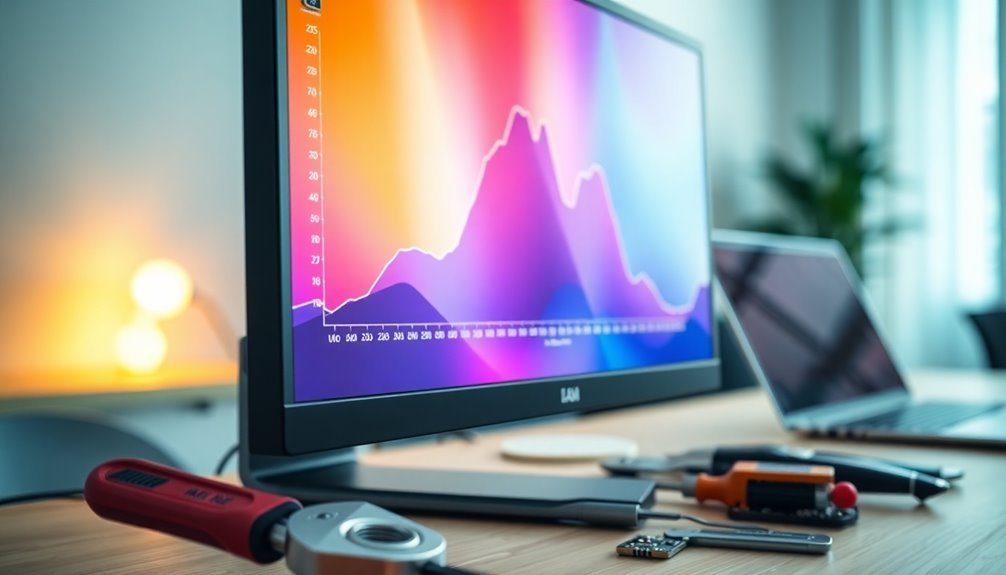
High RAM consumption can significantly slow down your PC. To fix this, close unnecessary applications, particularly resource-heavy programs, using Task Manager.
Check for background processes that might be consuming memory and disable unwanted startup programs. Additionally, consider increasing your virtual memory size and running diagnostic tools to identify memory leaks.
Regular software updates and uninstalling rarely used applications will also help improve performance. Exploring more methods to optimize RAM usage can maintain system efficiency effectively.
Causes of High RAM Usage
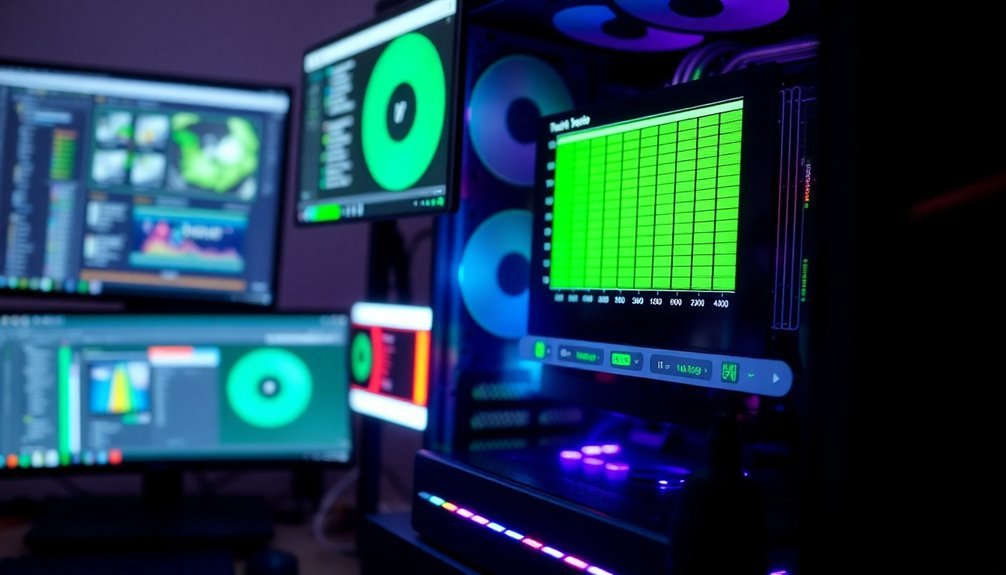
If you’re experiencing high RAM usage on your computer, several key factors could be affecting your system’s performance. One of the primary culprits is the running of excessive applications, which can consume substantial memory—particularly if you’re using resource-intensive programs such as video editors or gaming applications.
Additionally, background applications that may not be immediately apparent can also quietly consume RAM, contributing to the overall strain on your system’s memory.
Another common issue is having too many browser tabs open. Each tab can accumulate memory usage, collectively putting pressure on your computer’s RAM, leading to sluggish performance.
Memory leaks from poorly optimized or outdated software can cause RAM usage to steadily rise over time. This mismanagement can prevent the release of unused RAM, causing your system to respond more sluggishly than usual.
Moreover, malware and viruses can significantly degrade performance by depleting system resources, further exacerbating high RAM usage.
Insufficient physical RAM also presents a significant challenge; when your computer doesn’t have enough memory, it relies on slower virtual memory, which can significantly impact performance.
Furthermore, corrupted or malfunctioning drivers can allocate excess RAM, resulting in unexpected memory spikes.
To maintain optimal memory usage and ensure your computer runs smoothly, it’s crucial to identify and address these potential causes of high RAM usage. By managing your applications, keeping your software updated, and monitoring memory usage, you can enhance your system’s overall performance.
Symptoms and Identification of High Memory Usage
Is your system experiencing high memory usage? Pay attention to common symptoms that can signal this issue. If you notice frequent freezing or unresponsiveness even during simple tasks, or you receive warning messages indicating low memory, it’s time to investigate. Programs that once loaded quickly but now take longer are also a warning sign. Running multiple applications simultaneously can result in significant slowdowns or crashes, especially if your hardware is moderate.
To effectively monitor memory usage, open the Task Manager and check if memory usage exceeds 70% during typical operations. If you see values approaching 90-100%, your system is under strain. Other signs of excessive RAM consumption include noticeable lag during video playback, choppy streaming experiences, and delays in input response.
You may also notice discrepancies between total RAM usage and the sum of individual process usage, which can indicate hidden memory consumption. Additionally, failing RAM may lead to experiencing persistent memory issues even after rebooting or closing applications, which suggests underlying hardware problems.
These warnings highlight the impact of high memory usage on your overall system performance. Regularly monitoring these indicators will help you maintain optimal system performance and prevent potential crashes.
Common Background Factors Increasing RAM Usage
When it comes to high RAM consumption, several underlying factors can significantly increase your system’s resource demands. One major contributor is running multiple applications simultaneously, particularly resource-intensive software like video editing tools or modern gaming applications, which can rapidly deplete your available RAM.
This is especially true when your system is idle; background processes and startup programs can silently consume substantial memory.
Memory leaks from poorly optimized software can worsen the situation, as some applications fail to release the memory they use, leading to a steady rise in RAM utilization over time. Additionally, if your computer has inadequate physical RAM, it will rely heavily on virtual memory, which can slow down performance and does little to mitigate the reported RAM usage.
Furthermore, corrupted or outdated drivers can mismanage memory allocation, unexpectedly driving up RAM consumption. On top of that, the presence of malware can run covert processes in the background, stealing system resources and degrading overall performance.
To combat these common factors leading to high RAM usage, it’s crucial to regularly monitor and update your software, drivers, and security measures. This proactive approach can help maintain optimal RAM performance and improve system efficiency.
Troubleshooting Methods to Reduce RAM Usage
Maximize Your System Performance by Reducing RAM Usage: Effective Troubleshooting Methods****
Are you experiencing high RAM consumption on your computer? Optimizing RAM usage is crucial for enhancing performance and ensuring a smoother experience. By following these strategic troubleshooting methods, you can significantly alleviate RAM-related issues. Here’s how to get started:
1. Close Unnecessary Programs: One of the quickest ways to reduce RAM usage is to close any inactive applications. Use Task Manager to terminate programs you don’t need and disable unnecessary startup applications.
For optimal memory management, consider uninstalling software that you rarely use.
2. Increase Virtual Memory: To supplement your physical RAM, consider increasing the size of your virtual memory (paging file). This adjustment can be particularly beneficial during periods of peak usage.
Make sure to monitor your virtual memory settings regularly, ensuring they align with your system’s performance needs.
3. Run Diagnostic Tools**: Regularly testing the integrity of your RAM is essential. Use tools like Windows Memory Diagnostic or memtest86 to assess memory health**.
Additionally, run chkdsk to check the health of your hard drive, as issues here can affect overall memory performance.
By implementing these effective methods, you can maximize your system’s RAM efficiency, leading to improved performance and a more responsive experience.
For more tips on optimizing your computer’s resources, stay connected with our tech insights!
Technical Fixes to Optimize Memory Management
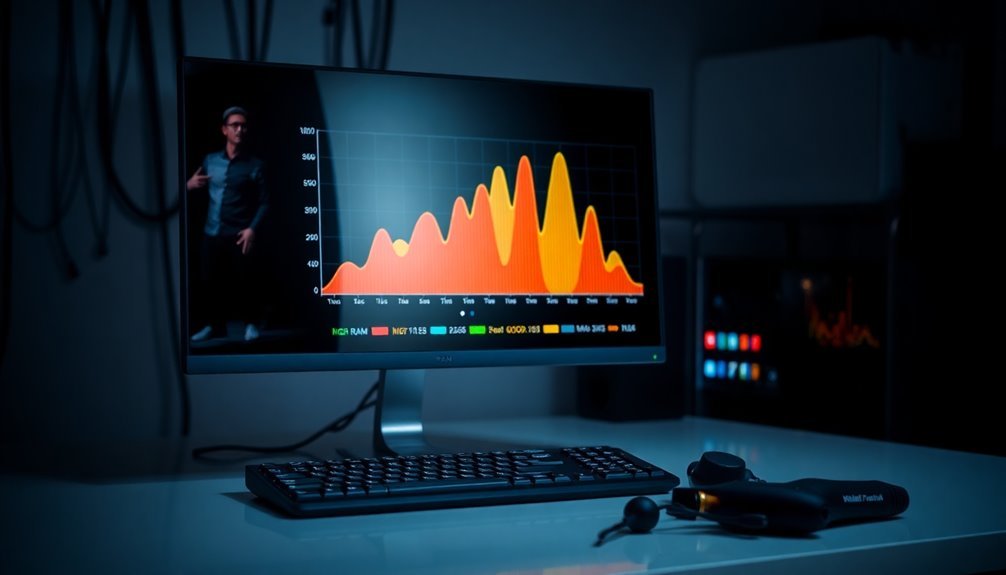
Optimizing memory management may seem challenging, but implementing effective technical fixes can significantly boost your system’s performance and efficiency.
To get started, select the right memory allocation strategy for your needs. Fixed partition allocation has lower overhead but can lead to memory fragmentation; conversely, dynamic partition allocation is more flexible and adapts to process requirements, though it may carry a higher risk of fragmentation.
Utilizing placement algorithms such as Best Fit can help reduce wasted space and improve memory allocation efficiency. Additionally, consider adopting object pooling to recycle instances of objects, which decreases the frequency of garbage collection and enhances runtime predictability—especially crucial for real-time applications.
Incorporating selective data loading and lazy initialization techniques allows your system to load only the necessary subsets of data, which significantly decreases the memory footprint.
Regular memory profiling is also vital; tools like Visual Studio Diagnostics help identify memory leaks and inefficiencies in your applications.
Configuring virtual memory with a stable paging file is another key strategy to limit excessive swapping and maintain your system’s performance and responsiveness.
By meticulously applying these strategies, you can drastically optimize your memory management practices and improve your overall system efficiency.
To learn more about these methods and enhance your memory management skills, continue exploring the latest resources and tools available in the field.
Long-Term Solutions and Upgrades
When addressing high RAM consumption, exploring long-term solutions and upgrades can significantly enhance your system’s performance and ensure your setup remains efficient for future use. Here are some highly effective strategies to consider:
1. Upgrade Physical RAM: Increasing your RAM by installing additional sticks can drastically boost your system’s available memory. This improvement enhances multitasking capabilities and elevates performance in memory-intensive applications.
Be sure to check compatibility with tools like the Essential System Scanner before making any purchases.
2. Optimize Storage and Virtual Memory****: Ensure that you have adequate free disk space to enable effective virtual memory usage.
Take advantage of automatic cleaning tools or Windows’ Storage Sense feature to maintain optimal storage conditions and prevent slowdowns.
3. Regular Software Maintenance and Application Management****: Keep your system running smoothly by routinely updating or uninstalling background applications and removing unnecessary software.
This practice can help mitigate memory leaks and reduce overall RAM consumption, leading to better system performance.
Monitoring Memory Usage Trends
Monitoring memory usage trends is crucial for sustaining optimal system performance, particularly as applications and workloads evolve over time. Utilizing effective tools such as SysGauge and integrated Windows utilities enables you to keep track of critical metrics including used/free memory, cache size, and page file usage.
Additionally, Sysinternals tools like RAMMap provide valuable insights into physical memory utilization, while third-party solutions like Paessler PRTG offer comprehensive real-time monitoring capabilities.
To effectively monitor memory performance, configure your Performance Monitor to collect key counters, including private bytes and virtual bytes over extended periods. This practice aids in identifying trends and spotting potential memory leaks.
Regularly exporting data sets is essential for conducting thorough analyses and maintaining documentation. Concentrate on recognizing normal usage patterns to swiftly detect any anomalies, such as processes that are consuming excessive amounts of memory.
Best Practices for Optimizing System Performance
To effectively boost system performance, it’s crucial to apply best practices that help manage resources and fine-tune configurations. By following these strategies, you can ensure your PC operates more smoothly and efficiently:
- Keep Your Software Updated: Regularly updating your software and drivers is vital for optimal performance. This practice addresses bugs, enhances system speed, and ensures better compatibility with your hardware, ultimately reducing conflicts that can tax your resources.
- Optimize System Settings: Disable unnecessary startup programs and modify power settings for high performance. This simple step can significantly decrease CPU and RAM usage during system boot, allowing for better resource allocation across tasks and applications.
- Implement Effective Resource Management: Utilize Task Manager to manage background processes effectively and prioritize critical applications. It’s best to avoid using unnecessary third-party optimization tools, as these can introduce potential conflicts and hinder performance rather than enhance it.
Frequently Asked Questions
What Is the Optimal Amount of RAM for Gaming PCS?
For gaming PCs, aim for at least 16 GB RAM. Serious gamers should consider 32 GB to accommodate demanding titles and multitasking, while 8 GB suffices for casual gaming on older or less intense games.
Can Using a VPN Impact My RAM Usage?
Using a VPN can indeed impact your RAM usage. When it processes traffic and encryption, it consumes memory resources, particularly in web mode, which could slightly reduce the available RAM for other applications.
How Does Browser Choice Affect Memory Consumption?
Your browser choice considerably impacts memory consumption. For instance, Edge utilizes less RAM with features like Sleeping Tabs, while Chrome’s isolated processes can lead to higher usage. Firefox balances efficiency but can increase RAM with numerous tabs open.
What Are Memory-Hogging Applications to Avoid?
If you’re looking to avoid trouble, steer clear of graphics-intensive applications, Adobe’s Creative Suite, and modern web browsers. They love guzzling RAM, often leading to sluggish performance and system stability issues during usage.
Does Upgrading Windows Impact RAM Usage?
Yes, upgrading Windows impacts RAM usage. New features and background processes increase baseline consumption. Enhanced memory caching and preloading can lead to higher RAM usage, requiring more resources, even after fresh installations.
Conclusion
In addressing high RAM consumption, you’ve equipped yourself with the tools to diagnose and resolve memory issues effectively. Just as a skilled conductor guides an orchestra, you can harmonize your system’s performance by implementing the troubleshooting methods and long-term solutions discussed. By consistently monitoring memory usage trends and practicing optimization techniques, you not only mitigate current problems but also fortify your system against future challenges. Enhanced performance is within your grasp—take charge and elevate your computing experience.

